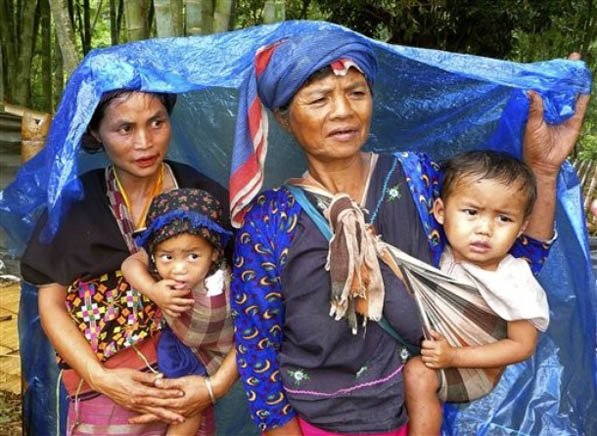The War Office in Naypyidaw has ordered Burmese government forces based in ethnic areas to relaunch their infamous “Four Cuts” strategy against the ethnic cease-fire groups that continue to resist the junta's Border Guard Force (BGF) plan.
The Burmese army's “Four Cuts” policy was developed in the 1970s during the former regime of the Burmese Socialist Programme Party with the intention of undermining ethnic militias by cutting off access to food, funds, information and recruitment, often with devastating consequences.
According to military sources, the War Office recently ordered regional commanders to reimpose the strategy in areas including Kachin State, Shan State, Karenni State , Karen State , Mon State and Tenasserim Division.
Military sources said the renewed campaign would include an additional “cut”—a policy of severing communication routes between allied ethnic groups.
Commenting on the information about the new “Four Cuts” campaign, Aung Kyaw Zaw, a Burmese military observer at the Sino-Burmese border who has close contacts to several ethnic armed groups, said the junta’s plan could be irrelevant because many ethnic armies are based in border areas.
“The Four Cuts strategy was designed for inland counterinsurgency operations,” he said. “In particular, there were government offensives against the Communist Party of Burma and the Karen National Union in the Pegu Mountains. But now the groups that are being targeted are based at the Sino-Burmese border and the Thai-Burmese border.”
Some observers expressed concern about an escalation of human rights violations such as forced relocations, the burning of villages and summary executions in ethnic areas, atrocities that invariably accompany such a strategy, they said.
“The Four Cuts strategy has been modified by the current military junta,” said Htet Min, a former army officer who is now living in exile. “When I was in the military, it was also called 'sweeping' an area, meaning removing any suspected villagers and burning their villages.”
Aung Lynn Htut, a former counter intelligence officer now living in the US, said the massive internal displacement in eastern Burma is directly related to the “Four Cuts” strategy, which was known in the far south of Burma as “No Man's Land” policy during operations in the 1990s, directly commanded by the office of the commander-in-chief.
The “No Man's Land” policy was ordered by the War Office to execute anyone, including children, who were found in areas of military operations,” he said.
Since 1989, the military regime has signed cease-fire agreements with as many as 17 ethnic armed groups. However, the major cease-fire groups have rejected the BGF plan that was first raised in April 2009.
Those groups include: the United Wa State Army; the Kachin Independent Organization; the National Democratic Alliance Army, also known as the Mongla group, the Myanmar National Democratic Alliance Army or the Kokang group, the New Mon State Party, and a faction of the Democratic Karen Buddhist Army.

